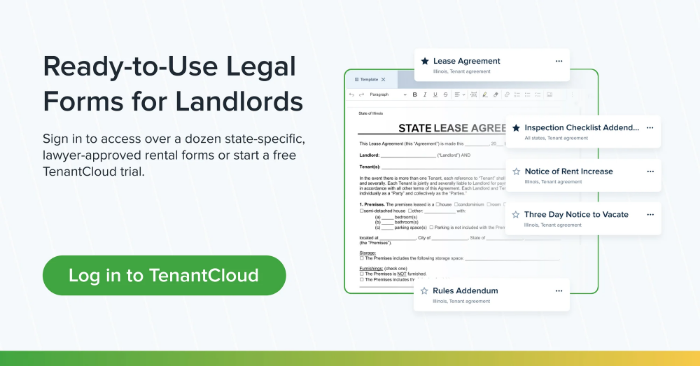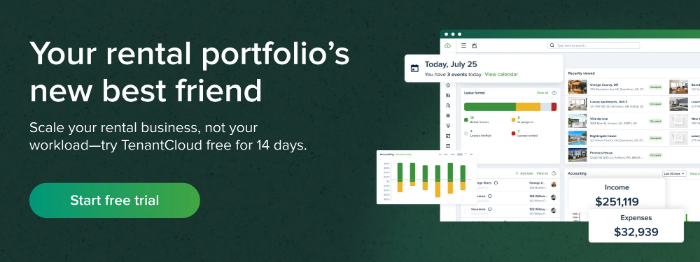Squatter incidents are on the rise across the United States, and the rise in cases has prompted emergency legislation in multiple states over the past few years.
From apartments in New York to townhouses in Florida, property owners are finding themselves unexpectedly locked in legal battles while unauthorized occupants live rent-free in their properties.
The term "squatters' rights" often creates confusion for many property owners and managers because it doesn’t actually refer to a single law. Instead, it includes two distinct legal concepts:
- The traditional doctrine of adverse possession
- The modern abuse of tenant protection laws by bad actors
Knowing the difference between these two instances is key for any property owner who wants to protect their investment long-term and can respond when an unauthorized occupant shows up unexpectedly.
Whether you’re a seasoned real estate investor or a first-time landlord, you need to know your rights and legal options when dealing with squatters, as well as the potential protections that squatters enjoy.
What Are Squatters' Rights?
Despite the name, “squatters' rights” don't exist as a formal legal concept. Instead, the term refers to the legal protections that unauthorized occupants may claim under two different areas of law: adverse possession laws and tenant protection statutes.
The confusion around squatters' rights stems from the reality that unauthorized occupants can’t be treated as criminal trespassers in many situations.
Once someone establishes any form of residency claim – even if it’s fraudulent – property owners must follow the proper steps to address the issue and reclaim their property. Failure to do so may result in the unauthorized occupant gaining legal rights to the property, which can quickly become a nightmare for owners.
What Are Adverse Possession Laws?
Adverse possession represents the traditional legal foundation of what people call "squatters' rights."
This goes back to Roman law and allows someone to gain legal property ownership by simply occupying a space for a certain number of years. The theory behind adverse possession laws is that land (or in this case, property) should be put to productive use instead of sitting abandoned.
For a valid adverse possession claim, a squatter must meet several legal requirements, which can vary depending on the state where the property is located. In most cases, a squatter must demonstrate:
- Hostile possession – occupying the property without the owner's permission. Despite the name, this doesn’t mean aggressive behavior. Rather, it means the property is actively occupied against the owner's interests.
- Actual possession – the squatter physically occupies and uses the property as an owner would (such as living there, maintaining it, or making improvements).
- Open and notorious possession – means the occupation must be obvious to anyone, including the actual owner.
- Exclusive possession – the squatter controls the property alone, and is not sharing it with the true owner or other unauthorized occupants.
- Continuous possession – the individuals must be occupying for the entire statutory period, which ranges from 5 years in states like California and Montana to 30 years in New Jersey.
Many states add additional requirements, which can include paying property taxes during the possession period or holding a form of documentation that appears to give the squatter title to the property.
How Do Adverse Possession Claims Work?
If you're a property owner, you’ll want to know how these adverse possession claims work in order to better protect your investment from long-term occupation threats.
For any adverse possession claim to succeed, the squatter must prove all five aspects mentioned above. Missing even one will typically mean that the claim will fail entirely.
But not all states’ adverse possession claims are the same. There are some states with shorter periods, such as California (5 years), Montana (5 years), and Arkansas (7 years). However, these states often require additional elements, like paying property taxes throughout the occupation period.
Other states have longer requirements, such as New Jersey (30 years for most private property), Pennsylvania (21 years), and others requiring 20+ years of occupation.
In reality, the vast majority of squatter situations have nothing to do with adverse possession laws. Instead, they typically involve rural or abandoned properties where the owner has been absent for many years.
What Is Legal Ownership? How Can It Be Threatened?
Legal property ownership comes with specific rights that property owners often take for granted – until an unauthorized occupant suddenly challenges those rights.
When you own property, you have the "right to exclude". This means you can legally prevent others from using your property without the owner's permission. This right is fundamental to lawful ownership and protected by state laws and the U.S. Constitution.
In tenant protection cases, squatters aren't trying to gain ownership. Instead, they're using laws designed to protect legitimate renters to buy time and live rent-free while property owners navigate lengthy eviction proceedings.
Recent Changes to Protect Property Ownership
The 2024-2025 wave of anti-squatting legislation shows the growing concern that outdated laws undermine property owners' rights. Many states have started enacting and enforcing new legislation to better protect property owners.
- Florida's Property Rights Bill allows property owners to request immediate removal of unauthorized occupants by local law enforcement.
- New York amended its property laws to explicitly exclude squatters from the definition of tenants.
- Georgia's Squatter Reform Act allows property owners to submit an affidavit to authorities that gives squatters three business days to provide proof of authorization or face arrest.
What Are Your Legal Options for Removing Squatters?
When you find squatters have taken up residence on your property, you’ll want to act quickly.
But you’ll also need to know the rights and responsibilities you have as a property owner to make sure you follow the process exactly – as rushing through could cost you more than time and money.
Step One: Contact Local Law Enforcement
No matter how long the squatters have been there, your first call should be to local law enforcement. Even if they can't remove the squatters immediately, filing a police report creates documentation that could be used in future legal proceedings.
If someone just broke into your vacant properties and has been there for only a few days, law enforcement may be able to remove them immediately. This action will typically fall under criminal trespass law.
But if the occupants have been there for weeks or months, police often won't remove them without a court order.
Step Two: Serve Formal Eviction Notice
If law enforcement can't remove the squatters immediately, it’s time to start the formal eviction proceedings – and that begins with serving a proper adverse action notice.
The type of notice and notice period will depend on your state laws and the squatters' claims. Some states require only 3-day notices for obvious trespassers.. Others may require 30-day notices, especially if the squatters claim any form of tenancy.
You’ll want to make sure to serve the formal eviction notice according to your state's requirements, which can include methods such as hand delivery, certified mail, or posting on the property.
Step Three: File an Unlawful Detainer Lawsuit
What if the squatters don't leave after the notice period expires? At this point, you can file an unlawful detainer lawsuit in your local court. This is the same legal process used to evict squatters who haven't paid rent.
If you win, the court will issue a writ of possession. This legal document can authorize local law enforcement to physically remove the squatters from your property.
What Not to Do
If you follow each step of the process, you’re more likely to see success in evicting squatters from your property. But a single wrong move can put you in hot water.
Never attempt "self-help" evictions. In most states, it’s illegal to change the locks while squatters are present or shut off utilities to forcibly remove them. You also can’t remove their belongings or use physical force. These actions are illegal in most states and can actually strengthen the squatters' legal position.
How Do You Prevent Squatters from Targeting Your Property?
Prevention is always better than dealing with eviction proceedings.
Regular Property Inspections
The most important prevention strategy is visiting your vacant properties regularly. Squatters typically target properties that appear abandoned or rarely monitored.
If you can't inspect properties yourself, hire a property or rental management company or local service to check on them monthly. Document each inspection with photos and notes about the property's condition.
Secure All Entry Points
Make sure all doors and windows are properly secured with working locks. Replace any broken windows or doors immediately – these signal to potential squatters that the property isn't being maintained.
Post clear "No Trespassing" signs on the property. While these won't prevent determined squatters, they provide additional legal evidence that any occupation is unauthorized.
Maintain the Property's Appearance & Pay Property Taxes
Keep the exterior of vacant properties well-maintained. Overgrown landscaping, accumulated mail, and general neglect signal that a property might be abandoned.
Continue utility services or have them professionally shut off rather than simply allowing them to be disconnected for non-payment. And don’t forget to pay your property taxes – as any unpaid taxes can make the process much more complicated.
Protecting Your Property Rights in 2025
The reality of squatters' rights is continuing to change as states enact legislation that balances property owners' protections with legitimate tenants' rights and responsibilities.
While many of the moves are helping property owners avoid squatter situations and protect their property, there are still many steps you need to take to stay compliant with the law.
Knowing the difference between adverse possession claims and tenant protection abuse is one of the first steps, and learning how to maintain your property to avoid squatters' issues should follow closely behind.
TenantCloud's property management platform can give you the tools and resources you need to protect yourself from squatter situations. Our platform helps landlords monitor their properties, screen tenants, and keep all the right documentation necessary to respond quickly to unauthorized occupants.
From automated rent control compliance tracking to detailed property inspection reports, our tools help you stay ahead of any potential issue. Take control of your property protection strategy with TenantCloud today. Learn More








